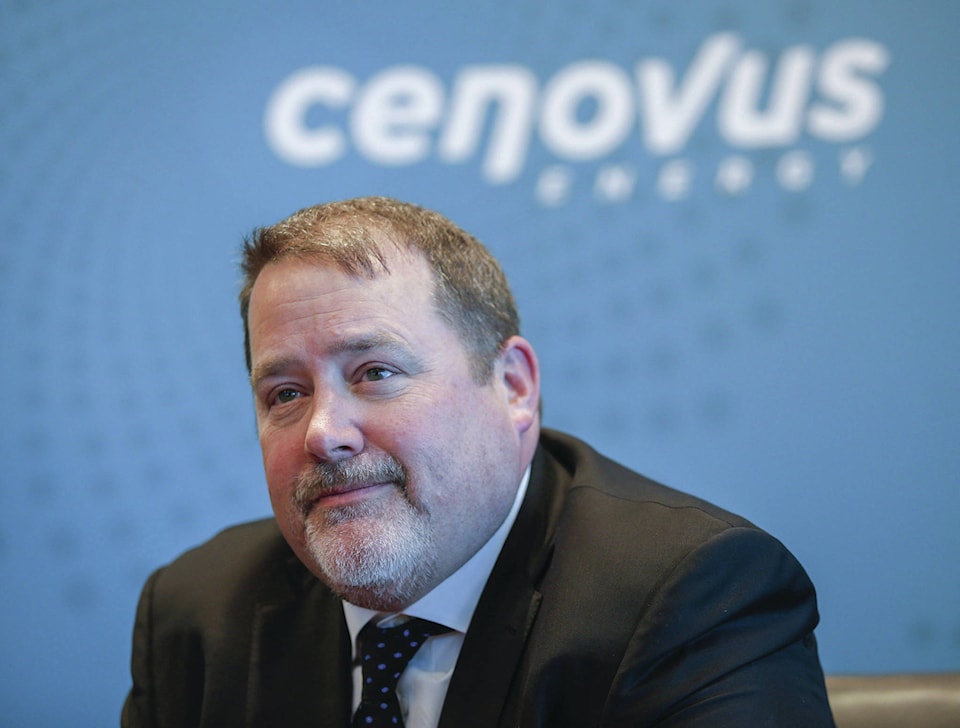CALGARY — Oilsands producer Cenovus Energy Inc. is rewarding its shareholders with a 25 per cent increase in its dividend while tightening its spending plans and maintaining “modest” production growth expectations over the next five years.
On a webcast from the company’s investor day in Toronto, CEO Alex Pourbaix said Cenovus faced “its fair share of challenges” when he was appointed about two years ago but his focus on strengthening the balance sheet is beginning to pay off.
“It really is timely to have an investor day right now because I think we are at the point where we, as a management team, feel that we are turning the corner and we can now start focusing on something a little beyond what’s right in front of our face,” Pourbaix said.
The Calgary-based company announced it will pay a quarterly dividend of 6.25 cents per share, up from a nickel, which will deliver an annual yield of nearly 2.1 per cent based on the company’s closing share price of $12.05 on Tuesday.
Cenovus will be able to make further dividend increases of five to 10 per cent annually even if benchmark U.S. oil prices fall to US$45 per barrel, Pourbaix said.
The company signalled it will also consider share buybacks after it reduces its net debt to $5 billion, a target it expects to reach in the next 12 to 18 months if commodity prices are stable. Two years ago, total debt was about $12 billion.
The increased payment to shareholders came as Cenovus trimmed its capital spending plan for 2019 to between $1.1 billion and $1.2 billion, a $150-million reduction from the midpoint of its April forecast.
It said it plans to grow production by two to three per cent per year over the next five years to increase total volumes to about 550,000 barrels of oil equivalent per day by the end of 2024.
Pourbaix acknowledged theenergy industry is under “scrutiny” as the issue of fighting climate change gains momentum around the world.
But Pourbaix said oil demand growth is expected to continue and said it’s better for that oil to come from Canada than from less responsible countries.
“As Canadians, I would argue we should view it not only as an opportunity but rather as an obligation to produce high-ESG (environmental, social and governance rated) Canadian oil, so that they can displace lower-ESG content barrels,” he said.
Last Friday, hundreds of thousands of people around the world inspired by the environmental activism of 16-year-old Greta Thunberg of Sweden marched in climate strikes to demand that governments do more to meet their greenhouse gas emission reduction targets and head off global warming.
In early reports, analysts were generally positive if not surprised about Cenovus’ dividend increase and its growth and spending prospects.
They applauded the company’s announcement of having secured an additional 22,500 barrels per day of pipeline transport to the U.S. Gulf Coast, noting it likely came through bidding for 50,000 bpd of added incremental capacity on the existing Keystone mainline.
The company said the additional space brings its combined current firm pipeline capacity to the U.S. Gulf Coast, the U.S. Midwest and the Canadian West Coast to more than 133,000 bpd.
It added that it is on track to ramp up its crude-by-rail capacity to about 100,000 bpd by the end of 2019.
